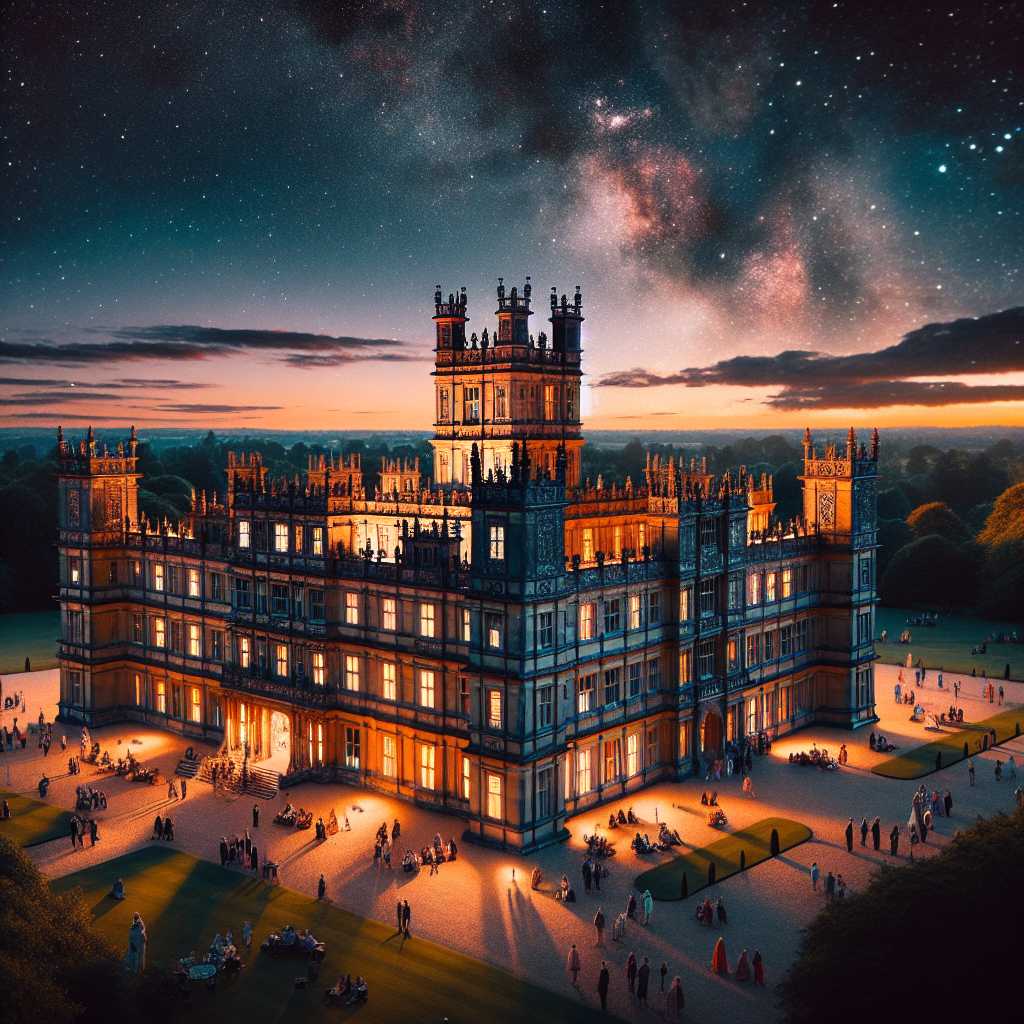The Enduring Appeal of Downton Abbey: A Study of Drama, History, and High Society
Introduction to Downton Abbey
Downton Abbey, the critically acclaimed British historical drama television series, first premiered on ITV in the United Kingdom on September 26, 2010. Created and principally written by Julian Fellowes, the show became an instant sensation both domestically and internationally. It is set in the early 20th century and follows the lives of the aristocratic Crawley family and their domestic servants on the fictional Yorkshire country estate of Downton Abbey.
With its clever writing, sumptuous set designs, and an ensemble cast led by the venerable Maggie Smith as Violet Crawley, Dowager Countess of Grantham, the series managed to capture the highs and lows of British society during a time of rapid social change.
Over six seasons and a follow-up movie in 2019, Downton Abbey has received numerous accolades, proving its cultural resonance and popularity globally.
Cultural Significance and Historical Context
The show is lauded for its accurate representation of the historic period it portrays. From the sinking of the Titanic in 1912 to the outbreak of World War I and the ensuing social shifts post-war including echoes of the Roaring Twenties, Downton Abbey meticulously represents each era.
The costumes, etiquette, and lifestyle displayed in Downton Abbey are well-researched which serves to immerse viewers in the narrative. The storyline incorporates themes such as the rigidity of the British class system at the time, gender roles, and the impact of technological innovations like the telephone and the automobile on society.
Themes regarding succession laws and the role of landed estates in rural economies further emphasize historical significance. The contrast between characters who cling to tradition and those who embrace progress offers insight into broader societal changes occurring across Europe during the 20th century.
Characters and Story Arcs
Downton Abbey shines because of its complex characters who bring dramatic narrative arcs to life. Audiences see relationships evolve over time such as that between Lord and Lady Grantham — played by Hugh Bonneville and Elizabeth McGovern respectively — struggling with issues related to their lineage, marriage, and estate management.
Another fan favorite is Lady Mary Crawley, portrayed by Michelle Dockery; her character’s progression from a prim aristocratic daughter to a widowed mother and finally to a modern businesswoman is an emblematic representation of shifts in women’s roles in society throughout this time period.
Below stairs, characters like Mr. Carson, Mrs. Hughes, Bates, and Anna also get extensive development, with storylines touching upon issues of loyalty, love across class divisions, injustice, and solidarity.
Cultural Impact and Fandom
Downton Abbey not only won numerous awards but also fostered an enthusiastic global fan base. It galvanized a renewed interest in early 20th-century history and inspired fashion lines, cookbooks emulating cuisine from the Edwardian era depicted in the show, and even tourism to Highclere Castle where much of Downton Abbey was filmed.
Scholarly discussions have been initiated on various topics ranging from post-Edwardian fashion to class stratification drawing directly from themes presented in the show. Furthermore, fan groups trailblaze social media with discussions about favorite moments from both small inconsequential scenes to major plot shifts.
Production Aspects: The Making of Downton Abbey
Apart from its storytelling brilliance, Downton Abbey’s acclaim partly lies in its high production values. The set design details every aspect of life in a British aristocratic home down to fine silverware placements on dinner tables. Costume design also plays a pivotal role – with Emmy Award-winning costumes reflecting changes in styles along with societal transformations.
Locations play a critical role as well. Highclere Castle poses majestically as Downton Abbey itself — a character as significant as any human cast member due to its imposing architecture that lends authenticity to the series’ storytelling.
Technological aspects including sound mixing and cinematography amalgamate seamlessly creating an audio-visual indulgence that perfectly meshes with pre-war Britain’s ambiance.
Continuing Legacy: Sequels and Spin-offs
The story did not end with TV; a feature film titled “Downton Abbey” was released in 2019 allowing fans to revisit their beloved characters. A second film was also announced due to strong demand further underscoring that Downton Abbey has transcended television formality into enduring cultural narrative edifice.
Whether through additional episodes or picture adaptations, audiences remain captivated while producers skillfully leverage new platforms ensuring longevity for Downton Abbey’s saga.
Notes
*Image Description: Highclere Castle standing magnificently against a twilight sky. Light glows from some windows implying vibrant life within while patrons stroll around taking in the grandeur.*
